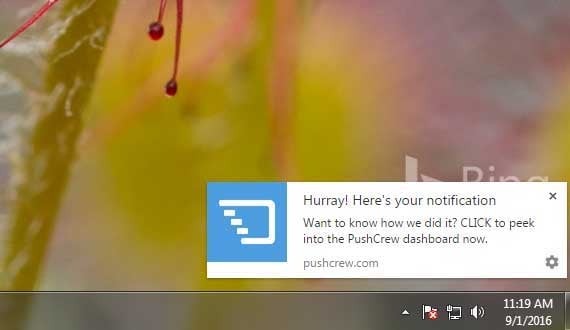QUICK HIT: Browser-Based Push Notifications In Focus

Regular Web users will likely have noticed an increase in browser-based push notifications over the past few years (at least if they are paying close attention to the changing digital experience).
What are these messages (see below for an example) and how can they be leveraged by websites today to drive more user activity and achieve greater efficiency in overall marketing cost? Let's take a closer look.
Browser-based notifications, or push notifications, essentially enable the delivery of a message to an end-user directly via their browser (regardless of whether it is a desktop or mobile device).
Communicating to users today can be done in a variety of ways including, for example, email and social media (as well as SMS). These channels are, without question, effective but can be costly to implement in some instances (email) and highly inefficient (social media) in others. Fortunately, when managed well, browser-based push notifications on desktops can provide an effective alternative and typically fit in quite well with brands existing communication strategy. And the bst part is that it's easier to get started than most may think.
Numerous solutions are available to do the back-end work including vendors such as the open-source OpenPush, and commercial providers including PushCrew (an example of which is below), FoxPush, Moengage, UrbainAirship, OneSignal and numerous others.
Do you currently use Web browser (push) notifications? Share your experience with this approach and communication format now by submitting a comment










